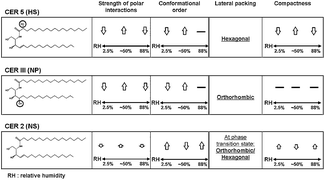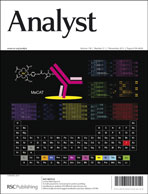The stratum corneum is the outermost layer of the skin; its barrier function is highly dependent on the composition and the structure as well as the organization of lipids in its extracellular matrix. Ceramides, free fatty acids and cholesterol represent the major lipid classes present in this matrix. They play an important role in maintaining the normal hydration levels required for the normal physiological function. Despite the advancement in the understanding of the structure, composition and the function of the stratum corneum (SC), the concern of “dry skin” remains important in dermatology and care research. Most studies focus on the quantification of water in the skin using different techniques including Raman spectroscopy, while the studies that investigate the effect of hydration on the quality of the barrier function of the skin are limited. Raman spectroscopy provides structural, conformational and organizational information that could help elucidate the effect of hydration on the barrier function of the skin. In order to assess the effect of relative humidity on the lipid barrier function; we used Raman spectroscopy to follow-up the evolution of the conformation and the organization of three synthetic ceramides (CER) differing from each other by the nature of their polar heads (sphingosine, phytosphingosine and α hydroxyl sphingosine), CER 2, III and 5 respectively. CER III and 5 showed a more compact and ordered organization with stronger polar interactions at intermediate relative humidity values, while CER 2 showed opposite tendencies to those observed with CER III and 5.

You have access to this article
 Please wait while we load your content...
Something went wrong. Try again?
Please wait while we load your content...
Something went wrong. Try again?


 Please wait while we load your content...
Please wait while we load your content...